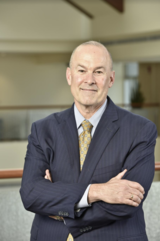Recently, I had the privilege of speaking to students and parents at our health sciences graduation exercises at West Virginia University. At each school’s ceremony, I touched upon our ultimate purpose – to promote health and positively affect humanity. That concept exists in tension with the current business model for health organizations, which is largely sick-based care.
What is health?
I think it is youth – our body’s biological age.
The younger your real age (biological age) is, compared to your birthday age (chronological age), the healthier you are.
Studies on longevity may give us the greatest insight into health-promoting approaches.
I have blogged about many of these areas separately, but connecting these data give us direction for improving this in West Virginia and beyond.
Perhaps the most impressive data is that gathered by the Kaiser Family Foundation, which queried 17,000 children and young adults about their lives and health. They found that adverse experiences in childhood, including neglect, family dysfunction and trauma, had lasting negative effects on these subjects’ health throughout their lives.
You can take the Adverse Childhood Experience Survey yourself. It is a ten-question test that can predict heightened risk of every disease, including cancer, heart disease, obesity, addiction, overdose and suicide. A score of 4 increases the likelihood of early death by up to 5 years and a score of 6 or more gives the subject a likelihood of living 20 years fewer. Adverse events and traumas in childhood are critical factors for poor health.
There are substantial differences among people based on their location and environment. If you look at U.S. data by county, there are up to 20 year differences in expected lifespan between the healthiest and least-healthy places.
Feeling loved, safe and connected as children has great impact on our future health and lifespan. It also tells us of the powerful role of perception, since the survey asks about the perspective and perception of the respondents.
Our social status as humans has significant impact on our health and lifespan.
Nobel laureate Angus Deaton and Anne Case from Princeton University found that a group of 45-55 year-old non-Hispanic whites are dying at a rate not seen since the peak of the AIDS epidemic. These Americans are dying from addiction-related issues – overdose, suicide and chronic liver disease related to alcohol use and hepatitis. A deeper dive suggests they are actually dying of despair, loss of purpose, isolation and hopelessness. They are dying because their reasons for being as humans are missing.
Work from Dan Buettner and the Blue Zone projects, identified five small regions in Japan, Italy, Greece, Costa Rica and California where people live long and well. These long-lived people follow their traditional lifestyles in the areas of diet, exercise, spiritual, and social living. They also have great purpose. Interestingly, many of these areas have lost this special trait of longevity as outsiders have invaded these fragile ecosystems and environments. While some have attempted to reduce these observations to a reductionist recipe to follow, the evidence is that it is the way people live, not how they live. They live simple, but fulfilling lives together. Their purpose and connection is critical, as is their perception of their lives.
This information tells us that living whole, full, connected lives of purpose and joy promotes our health and longevity. These lives can be very simple and focuses on the self-defined quality of life, not material possessions, title or power.
Another Nobel laureate, Elizabeth Blackburn, and her colleague Elissa Epel, found that the self-reported perception of stress accelerated aging of people up to 17 years, as evidenced by reduced length of telomeres on cells. Importantly, the intensity and duration of stress did not correlate with measures of objective stress, but instead was directly related to how these people rated and perceived their stress.
This information tells us that our longevity and health is related to our perception of our lives – abundance, love and safety are health-promoting, while scarcity, fear and isolation are not.
Lastly, the Gallup-Sharecare Wellbeing survey tests the perception of health from five parameters – financial, physical, purpose, community and social. This is a validated index based on responses from two and a half million people and the perceptions of the respondents correlate to lifespan on community levels .
West Virginia residents have the worst perception of their health on these parameters for the last eight years. We’re making some progress — we moved from 50th to 40th on our perception of having purpose in our lives, which may portend improvement in our health in the future.
This data suggests that our self-reported perceptions of issues like purpose, safety and connectedness of community, our finances, and physical abilities contribute to our health and lifespan.
In summary, these data argue that the key to longer and healthier lives may be directly related to our perceptions of our lives.
Maybe the most important elements in health is really HUMAN!
Great culture and great community may consist of the same basic elements – safety, leadership, purpose and connection.
These elements create an environment that promotes health, happiness and fulfillment.
Maybe the real secret to health is right in front of us.
Our choice.
To see the miracles in our lives and celebrate our friends, joys, and even our disappointments.
They are all part of an unbelievable adventure we call our lives.
Health is a product of the perception of our lives with important elements of feeling loved, connected, purposeful, safe and abundant.
This leads to a feeling of balance and wholeness, which is health.
Almost heaven.


